Abstract
The anatomical nature and pattern of incidence of bony bridging of the jugular foramen was investigated using 64 fetal crania aged nine months to term and 222 adult crania of Japanese. In addition, the region of the jugular foramen of an adult cadaver was carefully dissected in order to clarify the relationship between the cranial nerves passing through the jugular foramen and the intrajugular processes of the jugular foramen. The general conclusions concerning the anatomical nature of the bony bridging of the jugular foramen were as follows. (1) The intrajugular process of the temporal bone is situated posterior to the triangular depression (as described in Gray's Anatomy) of the petrous part. (2) The bony bridging of the jugular foramen is established by the contact of the intrajugular process of the temporal bone with the bony process of the occipital bone projecting either from just above the hypoglossal canal (Type I) or from posterior to the hypoglossal canal (Type III). (3) If both the processes of the occipital bone reach the intrajugular process of the temporal bone simultaneously, the jugular foramen is divided into three compartments. (4) In the case of Type I bridging, the anteromedial compartment transmits the glossopharyngeal nerve, while the posterolateral compartment gives passage to the vagus nerve, the accessory nerve and the internal jugular vein. (5) In the case of Type II bridging, the anteromedial compartment contains the glossopharyngeal, vagus and accessory nerves, and the posterolateral compartment transmits the internal jugular vein. (6) When tripartite division of the jugular foramen occurs, the anteromedial compartment transmits the glossopharyngeal nerve, the middle compartment contains the vagus and accessory nerves, and the posterolateral compartment transmits the internal jugular vein. Concerning the pattern of incidence of jugular foramen bridging in the Japanese fetal and adult cranial series, this is similar to that of the bony bridging of the hypoglossal canal. The fact that almost all the cases of bridging of the jugular foramen are already established by the end of fetal development must serve as a strong indication that this trait can be used effectively for anthropological population studies.
Full text
PDF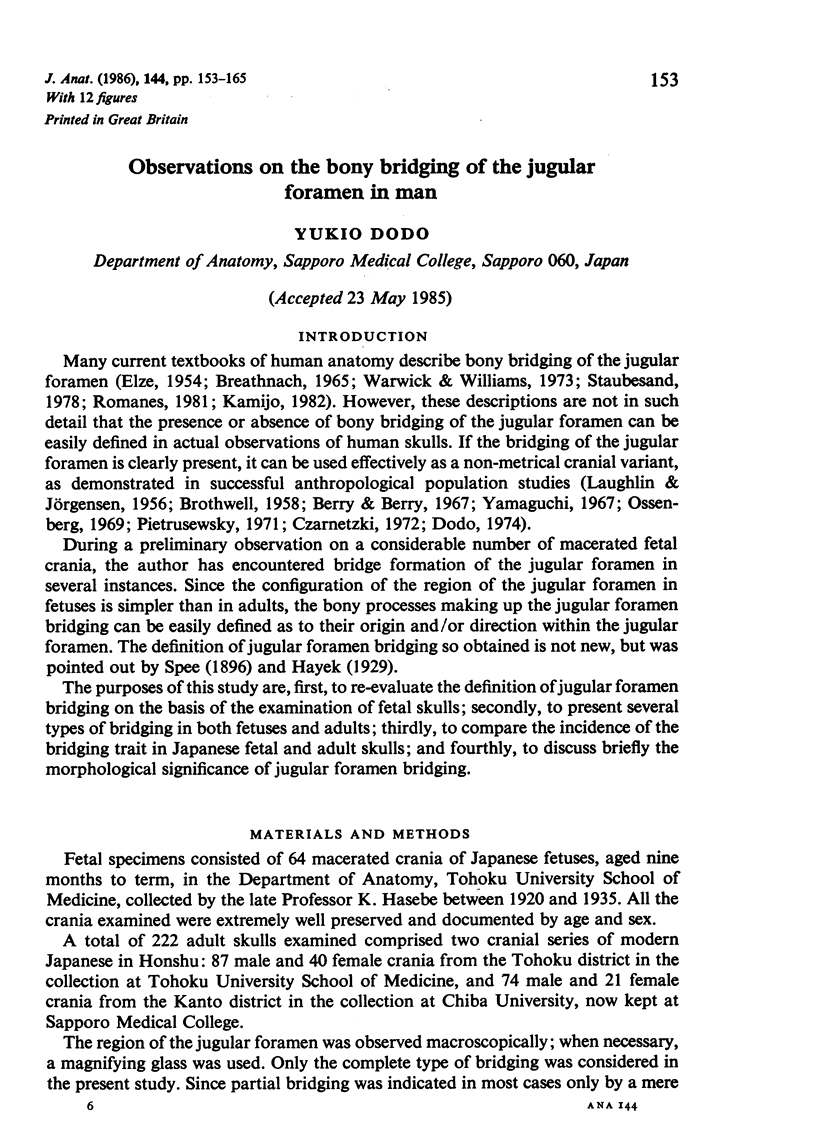
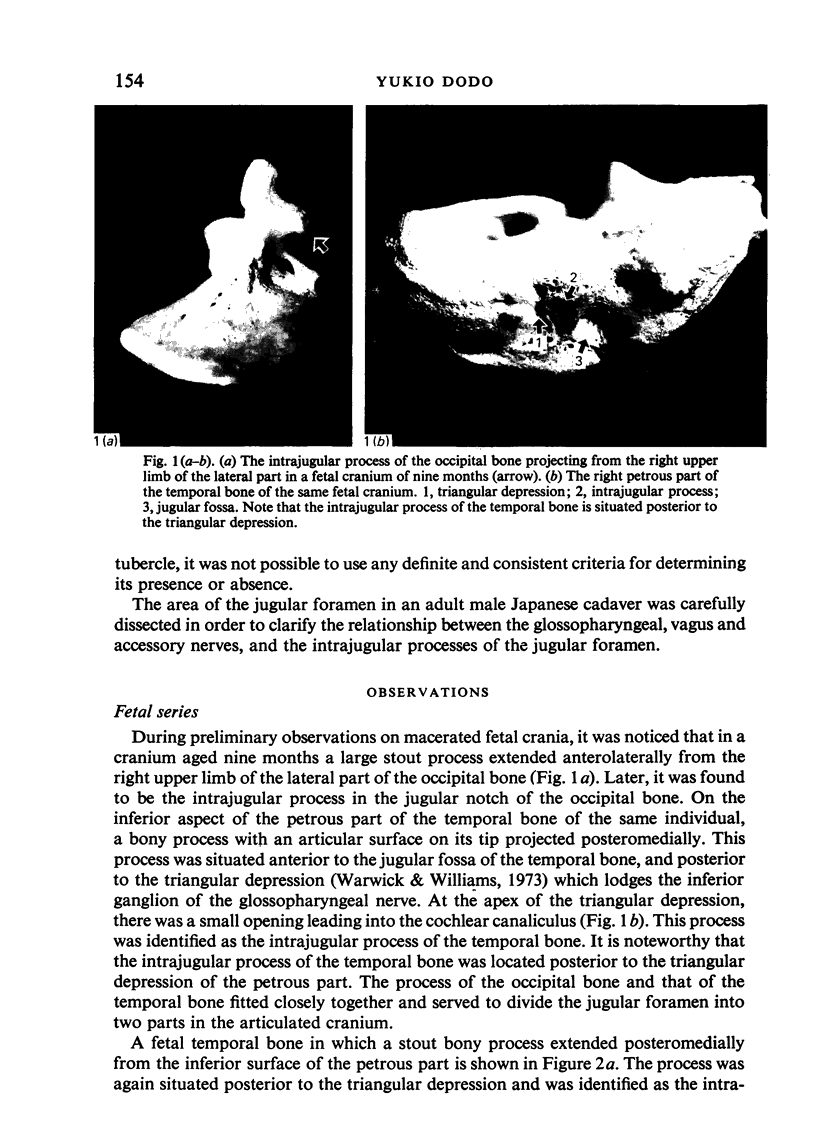
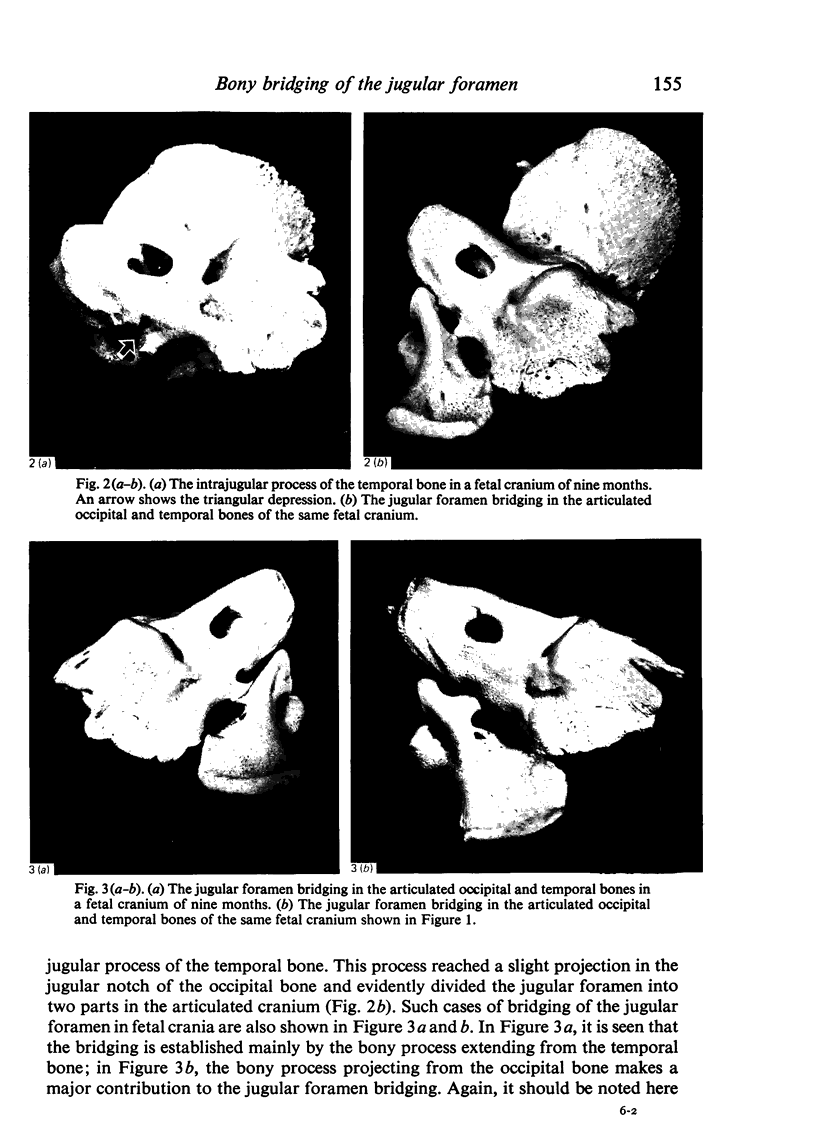
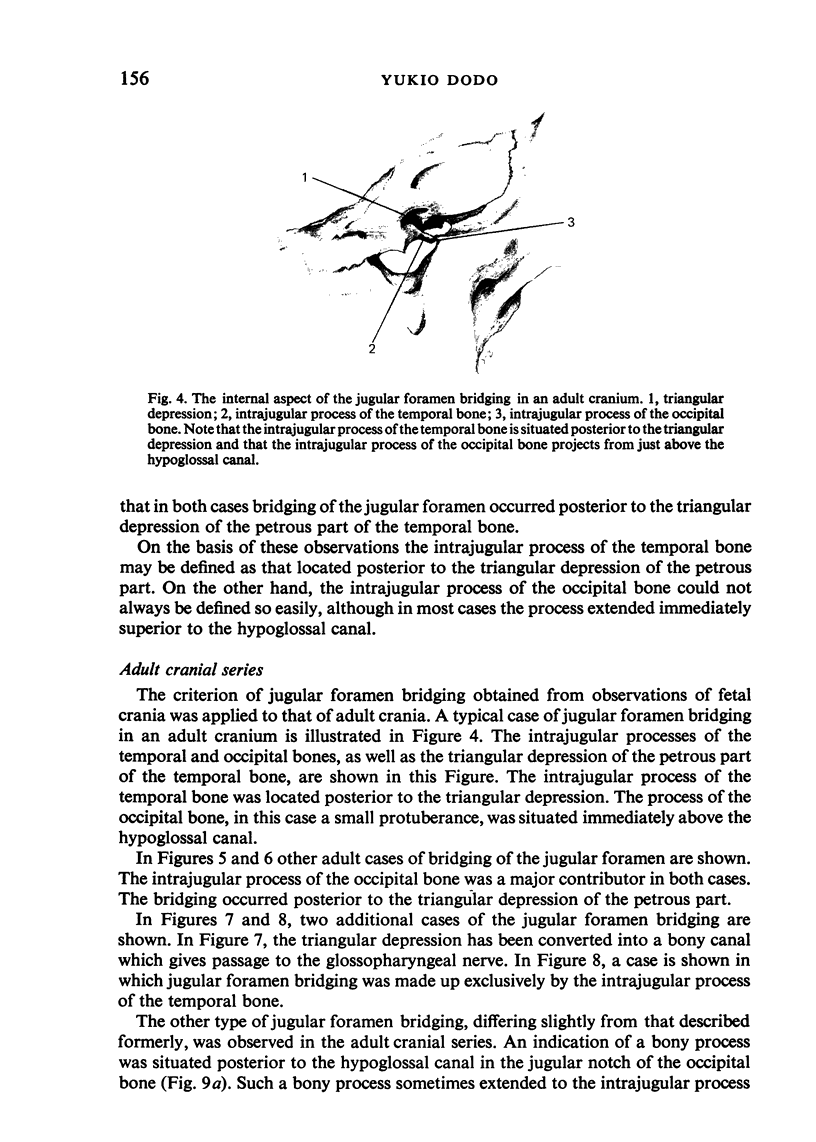
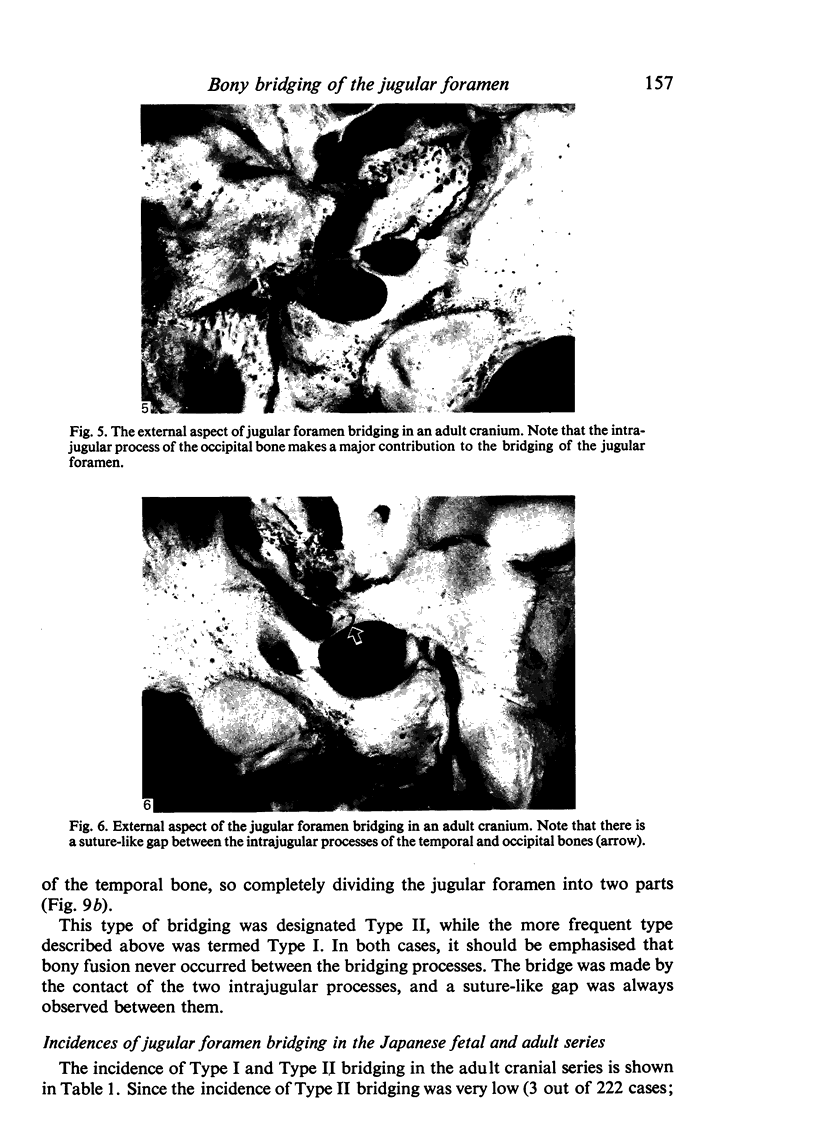
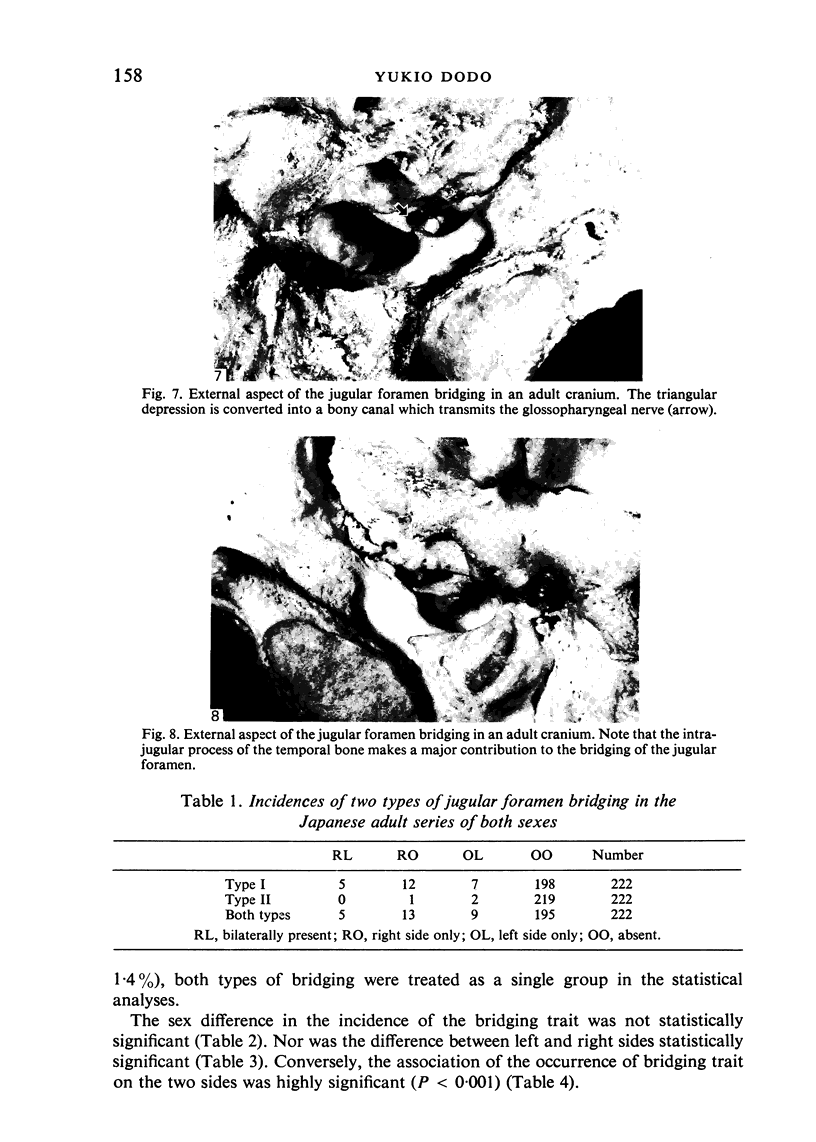
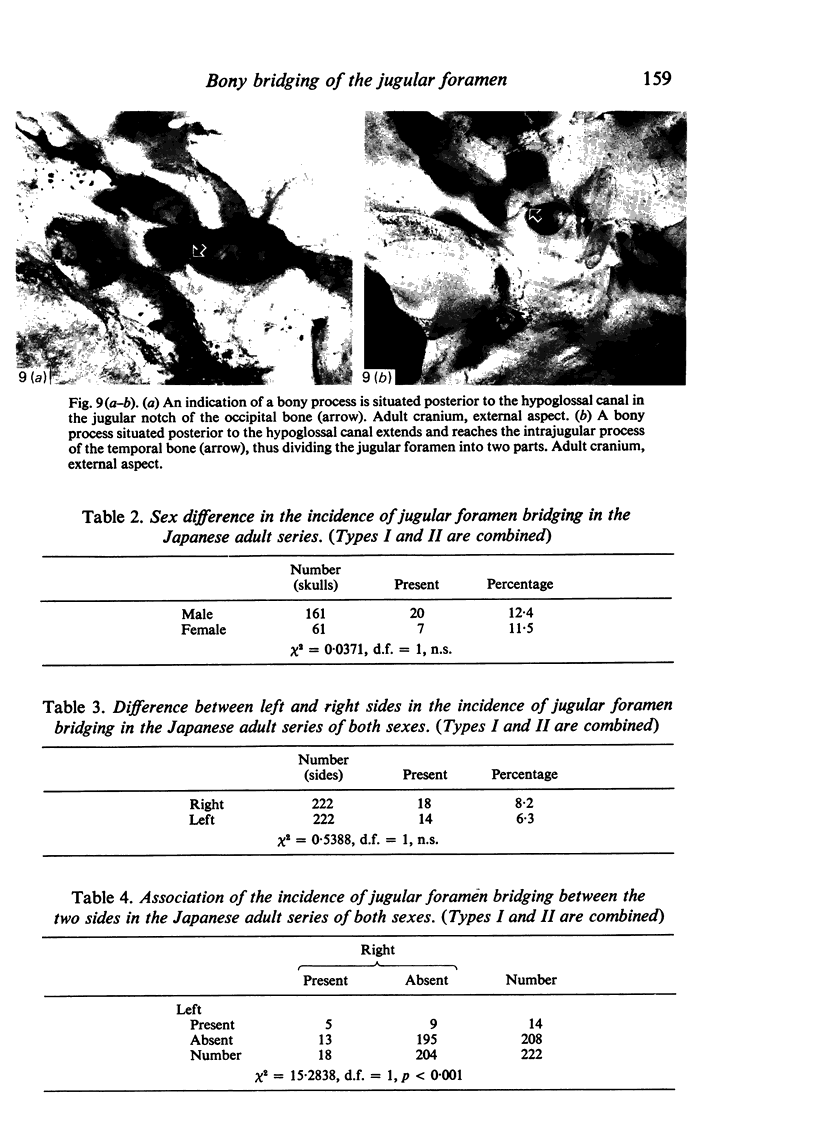
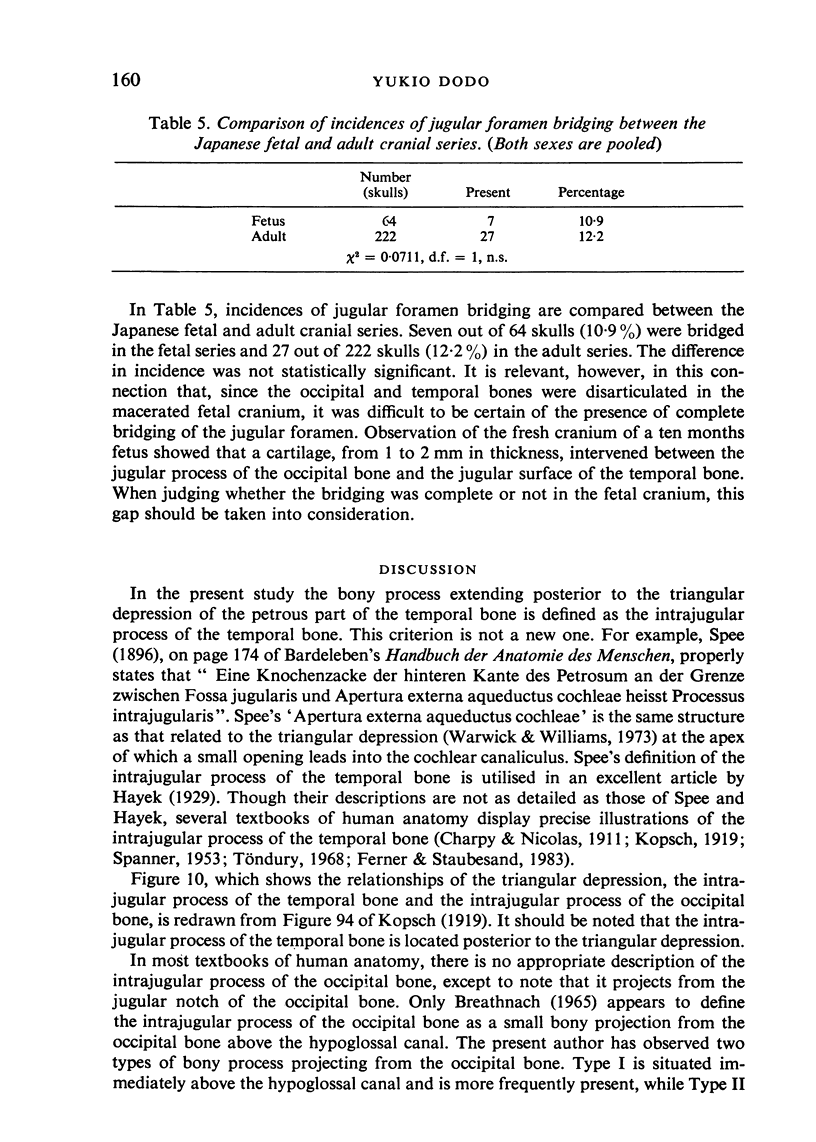

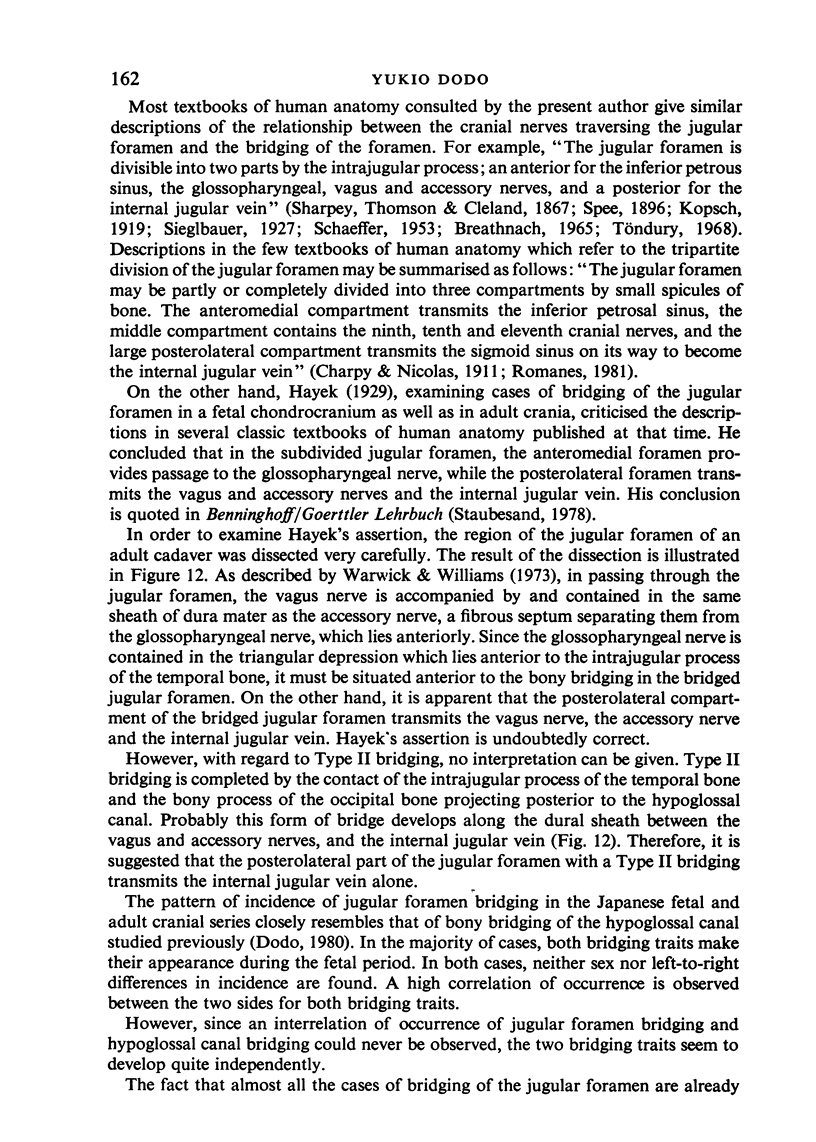
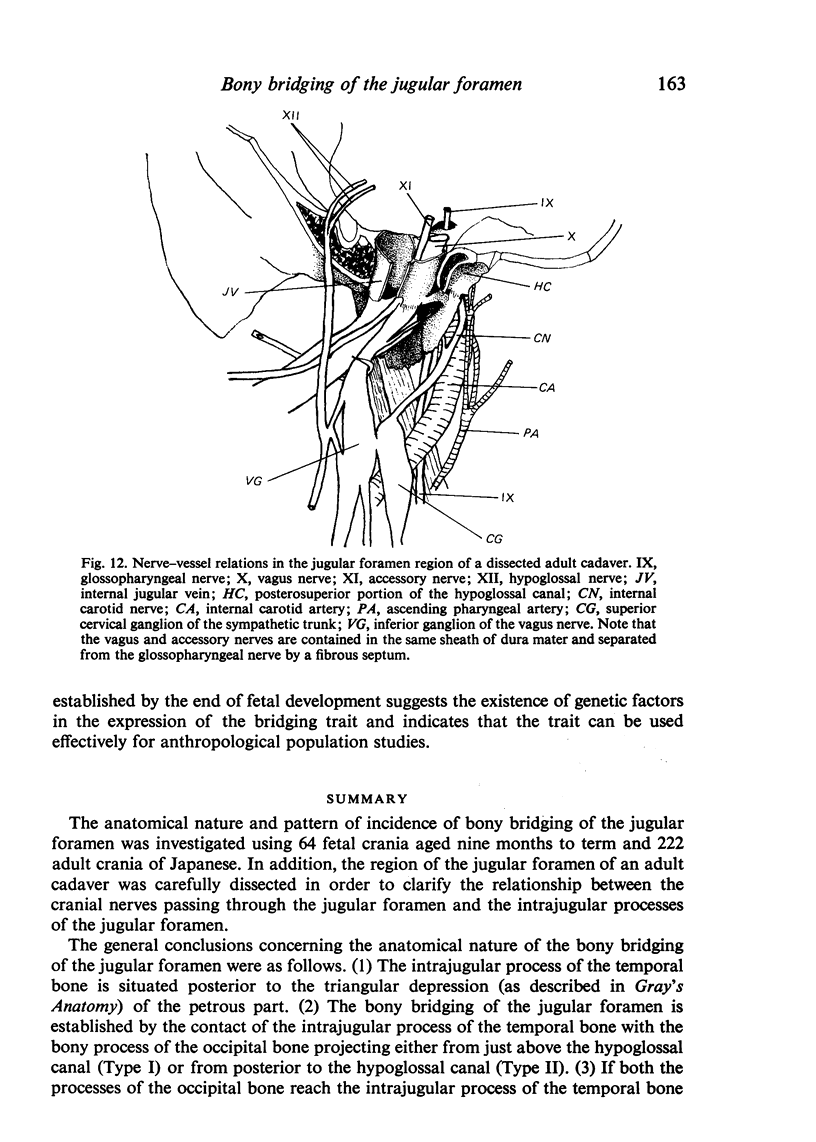
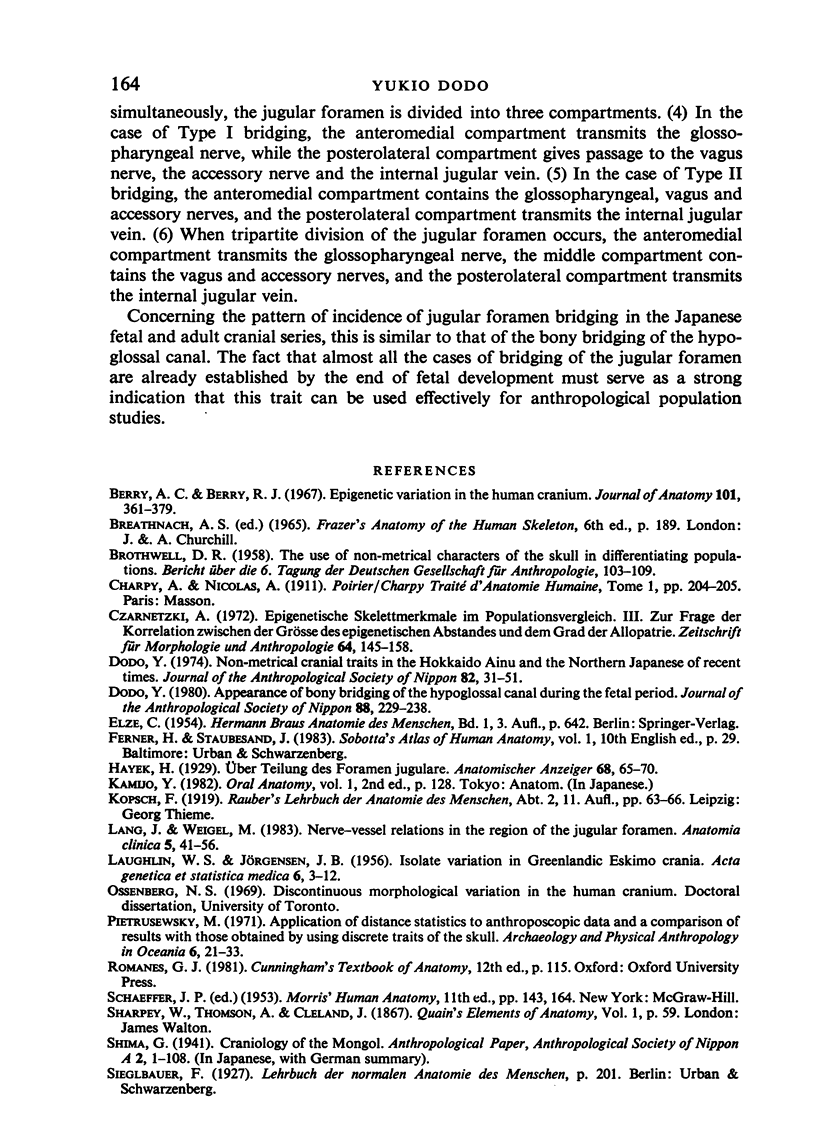
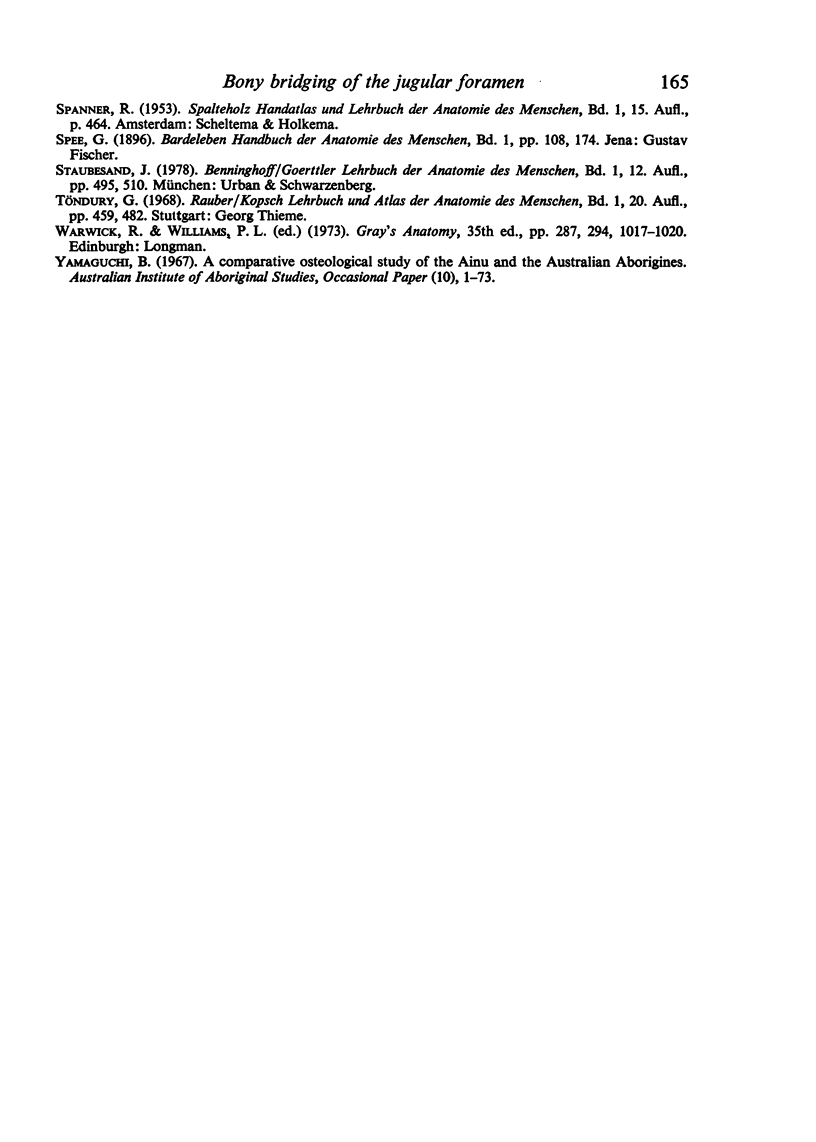
Images in this article
Selected References
These references are in PubMed. This may not be the complete list of references from this article.
- Carolineberry A., Berry R. J. Epigenetic variation in the human cranium. J Anat. 1967 Apr;101(Pt 2):361–379. [PMC free article] [PubMed] [Google Scholar]
- Czarnetzki A. Epigenetische Skelettmerkmale im Populationsvergleich. 3. Zur Frage der Korrelation zwischen der Grösse des epigenetischen Abstandes und dem Grad der Allopatrie. Z Morphol Anthropol. 1972 Nov;64(2):145–158. [PubMed] [Google Scholar]
- JORGENSEN J. B., LAUGHLIN W. S. Isolate variation in Greenlandic Eskimo crania. Acta Genet Stat Med. 1956;6(1 Pt 2):3–12. doi: 10.1159/000150804. [DOI] [PubMed] [Google Scholar]












